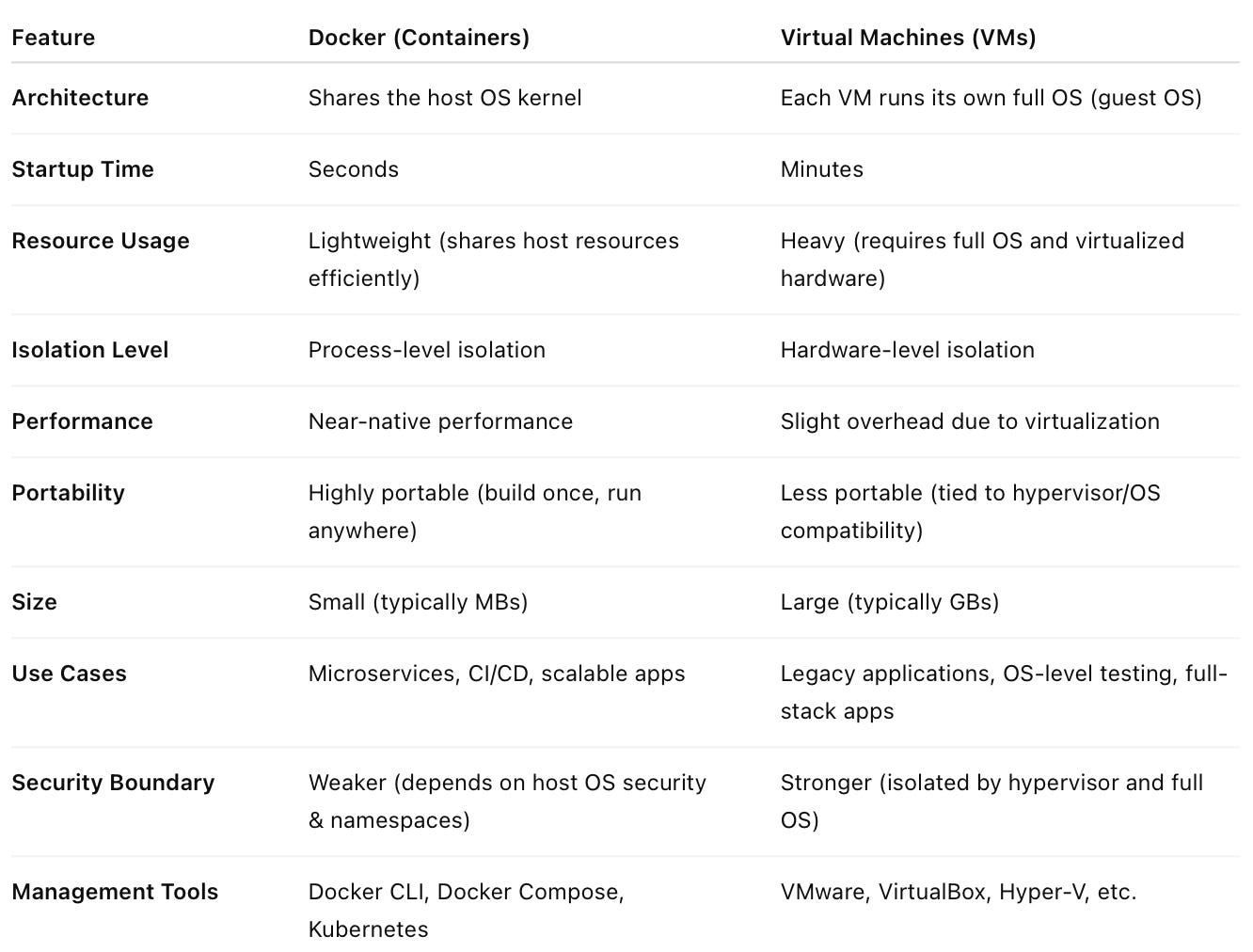"Containers aren't just for ops. They're how we scale ideas into products—and products into platforms—faster, safer, and with less drama."
If you're on a product team in 2025 and you're not familiar with Docker—or worse, you've dismissed it as "just DevOps stuff"—you're missing a lever that affects everything from velocity and stability to customer confidence.
In this issue, I’ll break down how Docker actually works, how it compares to virtual machines (VMs), and what your product roadmap has to do with container orchestration. If you're a PM, tech lead, or product-minded founder, this is for you.
Why Docker Exists
Once upon a time (pre-2013), shipping software was chaos. You'd hear:
“It works on my machine.”
“Staging is different from prod.”
“That bug is an environment issue.”
Then came Docker. Instead of installing dependencies one-by-one and configuring servers by hand, Docker let developers package their code, dependencies, and environment into a single container. That container could run on any machine—local, cloud, or production—and behave exactly the same.
What Actually Is Docker?
Docker isn’t just one tool—it’s an ecosystem with three key parts:
1. Docker Client
This is the command-line tool (docker) or UI interface your developers use to tell Docker what to do:
bash
docker run
docker build
docker pushUnder the hood, the client sends API requests to the real engine: the Docker daemon.
🔍 Why it matters:
It simplifies workflows. Your team can automate builds, run apps locally, or test microservices with a single command. Less yak-shaving, more building.
2. Docker Host & Daemon
The Docker daemon (dockerd) runs in the background on your local machine or server. It listens for commands and does all the real work:
Spinning up containers
Building images
Managing networks and volumes
Pulling from or pushing to registries
This is where containers actually live and run.
Why it matters:
Whether devs are running containers locally or you're deploying to cloud infrastructure, Docker behaves the same. This consistency is gold, especially when you're trying to avoid bugs that only show up in prod.
3. Docker Registry
This is where Docker stores and shares container images. Think:
Public registries like Docker Hub
Private registries like GitHub Packages, AWS ECR, or Harbor
You build an image once, push it to a registry, and then pull it down to run on any machine.
Why it matters:
Treat your Docker images like versioned artifacts. That means better rollback support, traceable deployments, and faster QA validation.
Docker vs Virtual Machines (VMs): Not the Same Game
Let’s clear up a common misconception: Docker is not just a “lighter VM.”
Here’s the difference:
Docker is not a lightweight VM.
It's a containerization platform built for speed, efficiency, and portability, whereas VMs are designed for complete OS-level isolation and broader compatibility.
TL;DR:
VMs are like houses with separate plumbing. Containers are like rooms in a shared co-working space. Lightweight. Isolated. Efficient.
How Docker Accelerates Product Development
Shorter onboarding times: New devs spin up environments in minutes. No more "getting everything working locally" delays.
CI/CD velocity: Containers are perfect for automated testing and deployment. You test the actual image that ships.
Modular team architecture: Devs can build, test, and run isolated microservices independently.
No environment drift: QA tests what’s going to production. PMs demo features with the real thing.
Product-Centric Best Practices
Docker isn’t just for DevOps. Here’s how your product org can use it well:
Treat Docker Images Like First-Class Artifacts
Version and tag Docker images like you do code. Attach build metadata and changelogs. They’re as important as your artifacts.
Standardize Development Environments
Create a shared Docker Compose file that lets anyone spin up the full app stack locally. Database, API, frontend—all in sync.
Automate QA with Disposable Containers
Use Docker to spin up environments per PR. QA tests the container that ships, not a wonky staging branch with leftover state.
Use Private Registries
Don’t push sensitive services to public Docker Hub. Use AWS ECR, GCP Artifact Registry, or GitHub Container Registry with IAM policies.
Use Multi-Stage Docker Builds
Don’t ship bloated containers. Use multi-stage builds to strip out dev dependencies. Smaller images = faster deploys and better security posture.
Think Container-First
Docker isn't just a tech detail. It’s a cultural shift. It encourages teams to ship smaller, test earlier, isolate cleanly, and automate what matters.
If your product org still treats deployment as a post-launch activity, or QA as a separate environment, Docker is the missing glue.
Build like your team is already big.
Deploy like your system is already global.
Containerize like your roadmap depends on it.




